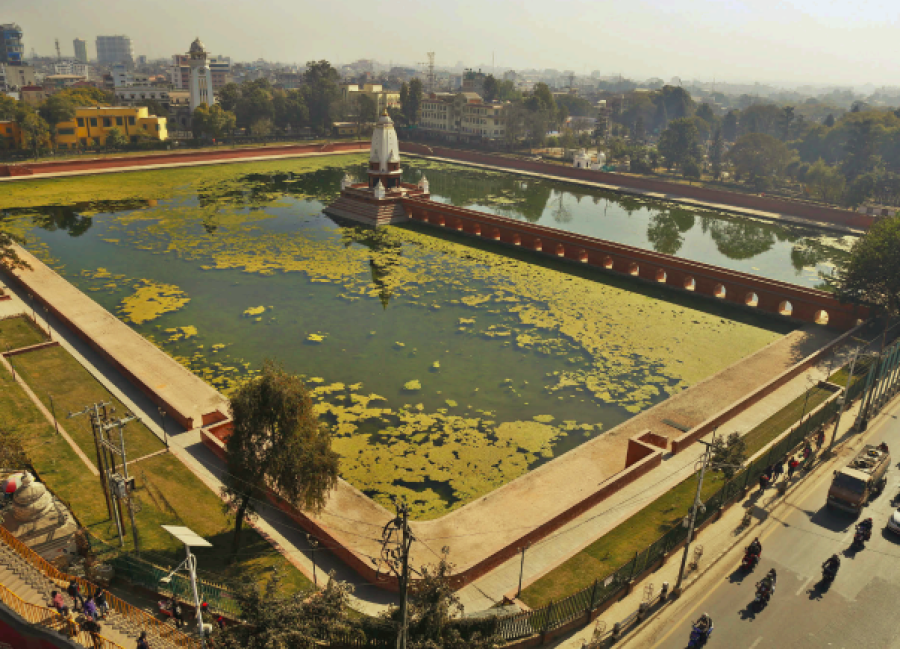Editorial
A tale of two ponds
Authorities must stop becoming habitual offenders and instead listen to specialists.
When President Bidya Devi Bhandari inaugurated the newly reconstructed Rani Pokhari in October, it was considered a major feat in post-earthquake reconstruction in Nepal. The iconic pond was said to have regained its glory and was expected to be a role model for the reconstruction of other heritage structures that had been ravaged by the earthquake. But the lake's water has now been covered by algae just two months after the inauguration. Conservationists say the accumulation of algae is due to the lack of an outlet in the pond, and that various methods, including oxidisation as well as fish farming apart from manual cleaning, would help remove the algae temporarily.
However, authorities cannot depend on short-term remedies to preserve the historical value of Rani Pokhari. It is clear that they did not consider it necessary to maintain the natural flow of water in the pond, the most fundamental aspect of reconstruction of a water-based heritage. Rani Pokhari, though, is not the first and the last historical site to have its reconstruction botched up. Just a kilometre away, Kamal Pokhari is set to face a similar fate as its reconstruction work is underway, with unnatural building materials being used aplenty.
At first glance, Kathmandu Metropolitan City's plan to reconstruct Kamal Pokhari seems quite earnest: To clean up the pond, restore its past glory, and turn it into a centre of attraction. It plans to do so by building a park, a play area, toilets and other amenities around the pond. If done right, these additions do not sound too bad, as they may complement the beauty and accessibility of the pond. However, the plan also includes building a walkway around the pond and a concrete flower in the middle, potentially harming the natural source of water in the wetland as the water in the pond has now been sucked out for the purpose. In all likelihood, the pond, named after the flower lotus, is going to be anything but beautiful after the ambitious beautification plan turns it into a commercial zone full of concrete structures.
Apart from their historical significance, ponds in the Kathmandu Valley, as everywhere else, work as repositories for rainwater and natural flood control mechanisms. In the dry season, they help recharge deep wells in the surrounding areas. The bed of the pond is, therefore, a potential resource of water that may get permanently damaged if it is ravaged by bulldozers filled with concrete. This fundamental message seems to have been lost on the authorities keen on using modern technologies that have little significance in heritage restoration. The idea is to restore heritages in such a way that they do not lose their historical and cultural essence.
It has become all too clear that the National Reconstruction Authority did the Rani Pokhari reconstruction work hastily and failed to consider the option of natural and sustainable water recharge. Conservationists are aghast at the blatant disregard for traditional skills, community knowledge and indigenous materials in the reconstruction of several heritage sites in the valley. And they are right in suspecting that Kamal Pokhari may face a similar, or even more tragic, fate. Authorities must stop becoming habitual offenders and instead listen to local communities, heritage experts and indigenous artisans when it comes to conservation and reconstruction of heritages.




 8.12°C Kathmandu
8.12°C Kathmandu












%20(1).jpg&w=300&height=200)

